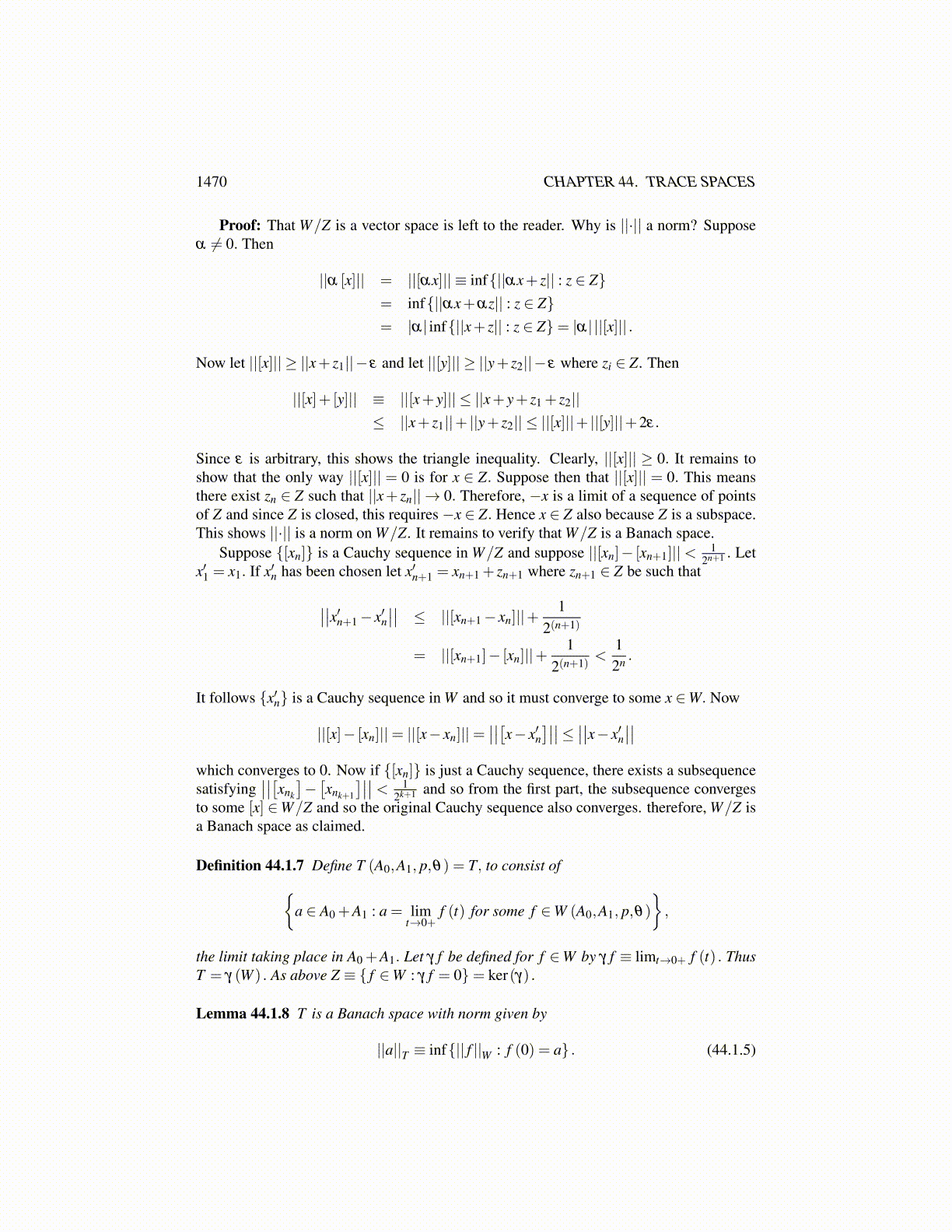
1470 CHAPTER 44. TRACE SPACES
Proof: Let 0 < s < t. Let ν + 1p = θ . Then for a generic g,
∫∞
0||τν g(τ)||p dτ =
∫∞
0
∣∣∣∣∣∣τθ g(τ)∣∣∣∣∣∣p dτ
τ
so that tν f ′ ∈ Lp (0,∞;A1) , the measure in this case being usual Lebesgue measure. Then
f (t)− f (s) =∫ t
sf ′ (τ)dτ =
∫ t
sτ
ν f ′ (τ)τ−ν dτ.
For 1p +
1p′ = 1, ν p′ =
(θ − 1
p
)p′ < 1 because θ < 1 = 1
p′ +1p . Therefore,
|| f (t)− f (s)||A0+A1
≤∫ t
s
∣∣∣∣ f ′ (τ)∣∣∣∣A0+A1dτ
≤∫ t
s
∣∣∣∣ f ′ (τ)∣∣∣∣A1dτ =
∫ t
s
∣∣∣∣τν f ′ (τ)∣∣∣∣
A1τ−ν dτ
≤(∫ t
s
∣∣∣∣τν f ′ (τ)∣∣∣∣p
A1dτ
)1/p(∫ t
sτ−ν p′dτ
)1/p′
≤ || f ||W
(t1−ν p′
1−ν p′− s1−ν p′
1−ν p′
)(44.1.3)
≤ || f ||Wt1−ν p′
1−ν p′.
which converges to 0 as t→ 0. This shows that limt→0+ f (t) exists in A0 +A1.Clearly Z is a subspace. Let fn→ f in W and suppose fn ∈ Z. Then since f ∈W, 44.1.3
implies f is continuous. Using 44.1.3 and replacing f with fn− fm and then taking a limitas s→ 0,
|| fn (t)− fm (t)||A0+A1≤ || fn− fm||W Cν t1−ν p′
Taking a subsequence, it can be assumed fn (t) converges to f (t) a.e. But the above inequal-ity shows that fn (t) is a Cauchy sequence in C ([0,β ] ;A0 +A1) for all β < ∞. Therefore,fn (t)→ f (t) for all t. Also,
|| fn (t)||A0+A1≤Cν || fn||W t1−ν p′ ≤ Kt1−ν p′
for some K depending on max{|| fn|| : n≥ 1} and so
|| f (t)||A0+A1≤ Kt1−ν p′
which implies f (0) = 0. Thus Z is closed.Consider the last claim. For a generic tθ g ∈ Lp
(0,∞, dt
t ;A), changing variables t = eτ ,∫
∞
0tθ p |g(t)|p dt
t=∫
∞
−∞
eτθ p |g(eτ)|p dτ